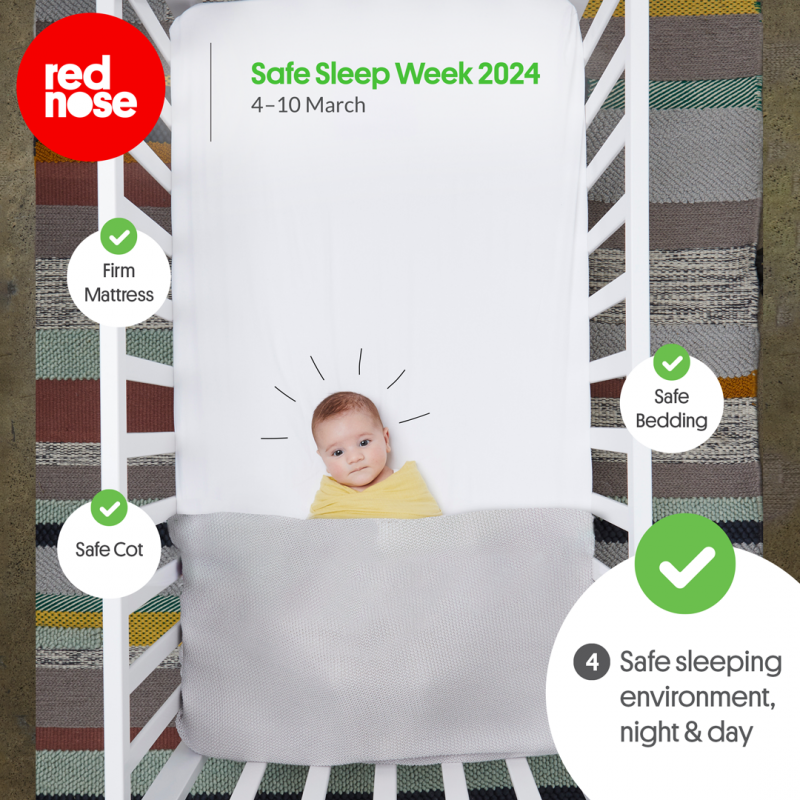Red Nose understands it can be confusing for parents to know what a safe or unsafe sleep environment is.

While we always recommend sleeping your baby in a safe sleeping environment, we are often asked, what does this actually mean?
Simply put, a safe sleeping environment means that all potential dangers have been removed and the baby is sleeping in a safe place for both day and night sleeps.
Soft surfaces and bedding, including bulky or loose blankets, head coverings, toys and cot bumpers, cause unsafe sleeping environments that can increase the risk of SIDS and SUDI. This is because soft items and head coverings can cover your baby’s face, obstructing their breathing and contributing to overheating.
The safest place for a baby to sleep is in a safe cot on a safe mattress, with safe bedding.
A safe sleeping environment is one where your baby is sleeping in their own safe space. If this is a cot, ensure that it meets Australian standards. Alternatively, if you choose to use a bassinet, ensure that it has a firm flat mattress, sides that permit airflow, and a stable base.or in a bassinet that has a firm, flat surface that is not tilted. If a blanket is being used, place baby with their feet at the end of the cot, and tuck the blanket securely underneath the mattress, so it only reaches baby’s chest and cannot ride up to cover their head. Do not be tempted to add quilts, pillows, bumpers, sheepskins or any other loose items as these can significantly increase the risk of SUDI to your baby.
Red Nose Safe Sleep Recommendations are:
- Always place baby on their back to sleep
- Keep baby’s face and head uncovered
- Keep baby smoke free, before and after birth
- Safe sleeping environment, night and day
- Sleep baby in their own safe sleep space in the parent or caregiver’s room for the first 6 months
- Breastfeed baby
